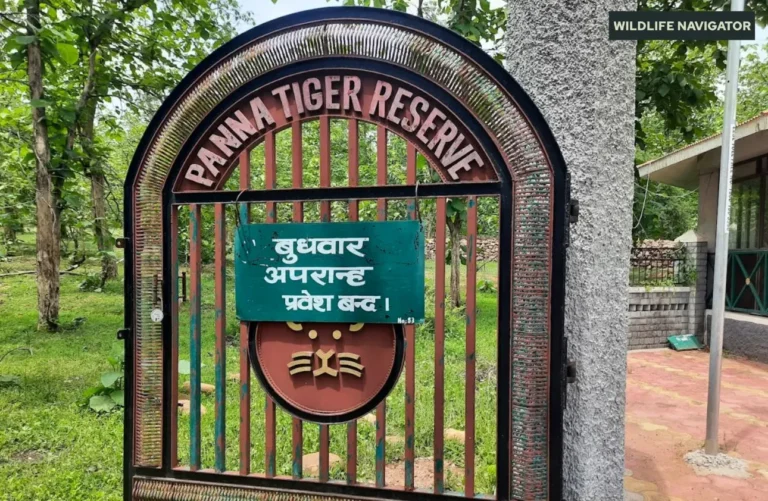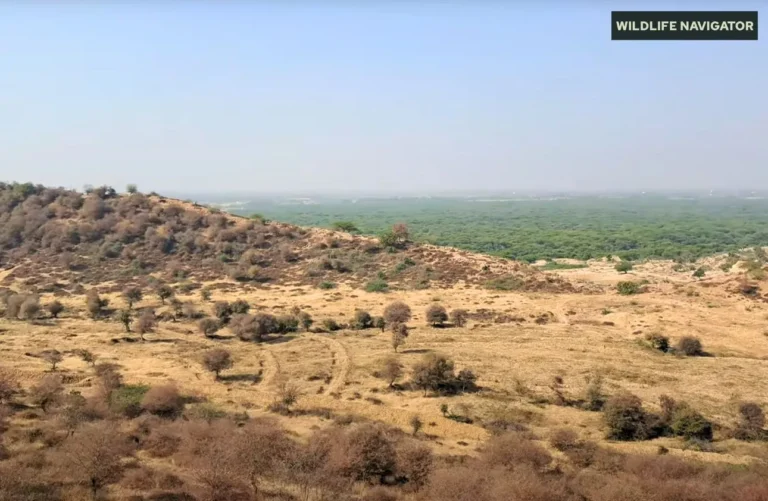Sundarbans National Park — A Complete Travel Guide to India’s Mangrove Wonderland

The Sundarbans National Park, located in the southern part of West Bengal, is one of India’s most awe-inspiring natural wonders. Spanning a vast network of tidal waterways, mudflats, and dense mangrove forests, it forms part of the world’s largest delta created by the Ganga, Brahmaputra, and Meghna rivers. Recognised as a UNESCO World Heritage Site, this unique ecosystem is home to an extraordinary variety of wildlife — from the elusive Royal Bengal Tiger to estuarine crocodiles, spotted deer, and hundreds of bird species.
What makes the Sundarbans truly exceptional is its constantly changing landscape, where land and sea blend seamlessly with the rhythm of tides. This enchanting wilderness offers an unforgettable experience for travellers seeking raw natural beauty, adventure, and peace. Beyond its ecological value, the Sundarbans also support the livelihoods of local communities who coexist with the forest’s untamed character. Visiting this mangrove paradise is not just a journey through nature, but a lesson in harmony and resilience — where every tide tells a story of survival.
1. History and Geography
The history of the Sundarbans National Park is deeply rooted in India’s conservation legacy and the evolution of its rich deltaic landscape. The name “Sundarbans” is derived from the Sundari tree (Heritiera fomes), one of the dominant mangrove species found here. Initially, parts of this region were declared as the Sundarbans Tiger Reserve in 1973 under Project Tiger, and later, in 1984, it was designated as a National Park to enhance wildlife protection and preserve the mangrove ecosystem.
Geographically, the park lies at the confluence of three great rivers — the Ganga, Brahmaputra, and Meghna — which together form the world’s largest delta. It covers an area of about 1,330 sq km, forming the core zone of the larger Sundarbans Biosphere Reserve, which extends over 9,600 sq km. The terrain is a complex mosaic of tidal waterways, mudflats, creeks, and islands, many of which submerge and reappear with the changing tides.
This dynamic landscape supports both terrestrial and aquatic life, creating a fragile yet fascinating ecosystem that constantly adapts to nature’s rhythm. The geography of the Sundarbans not only shapes its biodiversity but also defines its identity as a living, breathing delta.
2. Flora and Fauna of Sundarbans
The Sundarbans National Park is a living testament to nature’s resilience and diversity. As the world’s largest mangrove ecosystem, it supports an incredible range of life forms uniquely adapted to its saline, tidal environment. The constant ebb and flow of seawater have created a habitat unlike any other — one that blends terrestrial and aquatic life in perfect balance.
2.1 Flora
The park’s vegetation is dominated by mangrove forests, consisting of salt-tolerant species that thrive in muddy, oxygen-poor soils. These trees have stilt roots and pneumatophores (breathing roots) that help them survive tidal submersion. Prominent mangrove species include:
- Sundari (Heritiera fomes): The tree after which the region is named, known for its durable timber.
- Gewa (Excoecaria agallocha): A common mangrove species found along creeks.
- Goran (Ceriops decandra) and Keora (Sonneratia apetala): Important stabilisers of muddy banks.
- Dhundul (Xylocarpus granatum) and Passur (Xylocarpus mekongensis): Trees with large, decorative fruit and medicinal value.
These mangroves not only protect the coastline from erosion and cyclones but also serve as nurseries for fish and crustaceans, making them vital to local livelihoods.
2.2 Fauna
Sundarbans is most famous as the domain of the Royal Bengal Tiger, a population uniquely adapted to swim across tidal creeks and hunt in saline conditions. Besides tigers, the park shelters a rich array of wildlife:
- Mammals: Spotted deer, wild boar, fishing cat, and rhesus macaque.
- Reptiles: Saltwater crocodile, monitor lizard, king cobra, and olive ridley turtle.
- Aquatic life: Mudskippers, crabs, prawns, and diverse fish species.
- Birds: Over 250 species, including black-capped kingfisher, white-bellied sea eagle, herons, egrets, and migratory ducks.
Together, these species form an intricate food web sustained by the tides. The Sundarbans’ biodiversity isn’t just about wildlife—it’s a delicate symphony of land, water, and life that thrives against the odds, making it one of Earth’s most extraordinary ecosystems.
3. UNESCO World Heritage Site Status
In 1987, Sundarbans National Park was recognised as a UNESCO World Heritage Site, highlighting its global ecological significance and the urgent need for its protection. This designation underscores the park’s value as one of the world’s largest mangrove forests, a habitat that supports a rare combination of terrestrial and aquatic species, including the iconic Royal Bengal Tiger.
The UNESCO recognition was based on several key factors:
- Unique ecosystem: The Sundarbans is the only mangrove forest of its size where tigers have adapted to a saline and tidal environment.
- Biodiversity hotspot: It houses an extensive variety of flora and fauna, many of which are endangered or endemic to the region.
- Natural processes: The park represents a dynamic deltaic environment shaped by the interplay of rivers, tides, and sediment deposition, which is of significant scientific interest.
Being a World Heritage Site has also brought international attention and resources for conservation efforts, enabling programs to protect the delicate mangroves, monitor wildlife populations, and promote sustainable eco-tourism. Today, Sundarbans stands not only as a symbol of natural beauty but also as a beacon for global environmental preservation, emphasising the importance of balancing human presence with the survival of one of Earth’s most extraordinary ecosystems.
4. Safari Experience in Sundarbans National Park
Exploring Sundarbans National Park is best experienced through its iconic boat safaris, which allow visitors to navigate the labyrinth of creeks, rivers, and tidal channels. These safaris provide a unique perspective of the mangrove ecosystem, where every turn may reveal fascinating wildlife and the interplay of land and water.
4.1 Types of Safaris
Most safaris are guided boat tours arranged by forest authorities or licensed eco-tour operators. The boats vary from traditional wooden vessels to motorised launches, designed to safely traverse the shallow channels. While Sundarbans safaris are primarily daytime tours, some operators offer early morning or late afternoon trips for optimal wildlife sightings. Unlike other tiger reserves, the dense mangrove terrain makes walking safaris impractical, so boat safaris remain the safest and most immersive option.
4.2 Wildlife Sightings
While the Sundarbans is famed for tigers, spotting one on a safari is rare due to their elusive nature. Visitors are more likely to see:
- Estuarine crocodiles basking on mudflats.
- Spotted deer and wild boar along riverbanks.
- A variety of bird species, including kingfishers, herons, and migratory ducks.
- Aquatic life such as mudskippers and crabs in mangrove roots.
4.3 Permits and Guidelines
Access to the park requires permits issued by the forest department, which ensures sustainable tourism and minimal disturbance to wildlife. Visitors must follow strict eco-friendly guidelines: avoid littering, maintain silence, and respect local wildlife. Safety measures include life jackets, limited boat capacity, and adherence to designated routes.
4.4 Best Safari Routes
Popular entry points include Sajnekhali, Gomor, and Dobanki, each offering unique encounters with the park’s natural beauty. Choosing a route often depends on the season, tide, and wildlife activity, with early mornings providing the most tranquil and productive wildlife-watching experience.
5. How to Reach Sundarbans
Visiting Sundarbans National Park requires a combination of road, rail, and water transport, making the journey part of the adventure. The park is situated in southern West Bengal, around 100 km from Kolkata, which serves as the primary gateway for travellers.
5.1 By Air
The nearest airport is Netaji Subhas Chandra Bose International Airport in Kolkata. From the airport, travellers can hire taxis or take pre-arranged tour vans to reach the base entry points of the Sundarbans.
5.2 By Train and Road
The nearest major railway station is Canning, approximately 45 km from the park’s entry points. From Canning, visitors can hire ferries or local boats to navigate the mangrove waterways. Road access from Kolkata via Basanti Highway leads to ferry ghats like Sajnekhali, Gosaba, and Dobanki, where official boat safaris begin.
5.3 By Water
Boat travel is an essential part of Sundarbans exploration. Visitors embark on licensed motorised or traditional boats from designated ghats. These boats not only transport tourists to core and buffer zones but also provide a scenic introduction to the tidal mangrove landscape.
It is highly recommended to plan your journey through authorised eco-tour operators or forest department-approved guides, as local knowledge ensures safety and adherence to park regulations. Combining road, rail, and water transport makes reaching Sundarbans an immersive prelude to the natural wonders that await.
6. Best Time to Visit Sundarbans
Choosing the right time to visit Sundarbans National Park is essential to fully enjoy its unique mangrove ecosystem and maximise wildlife sightings. The park experiences a tropical climate with high humidity and significant rainfall, which influences accessibility and wildlife activity.
6.1 Recommended Season
The ideal months to visit are November to April. During this period:
- Weather is pleasant: Moderate temperatures and lower humidity make boat safaris comfortable.
- Wildlife sightings are better: Animals are more visible along riverbanks as water levels stabilise.
- Clear skies: Provide excellent conditions for photography and scenic views of the tidal creeks.
6.2 Seasons to Avoid
- Monsoon (June–September): Heavy rains and rising tides can submerge parts of the park, restricting boat movement and increasing safety risks.
- Peak summer (May–June): High temperatures and humidity may make travel uncomfortable, though wildlife activity is still observable.
By planning your visit during the November–April window, travellers can enjoy smooth navigation through the creeks, rich biodiversity, and a memorable Sundarbans experience while respecting the park’s delicate ecosystem.
7. Conservation Challenges and Initiatives
Sundarbans National Park is not only a haven of biodiversity but also a delicate ecosystem facing numerous environmental and human-induced pressures. Conservation efforts here are critical to ensure the survival of its unique flora and fauna.
7.1 Key Conservation Challenges
- Climate Change: Rising sea levels and increased cyclones threaten mangrove forests and submerge low-lying islands.
- Habitat Loss: Human settlements and encroachment in buffer zones reduce available space for wildlife.
- Poaching and Illegal Fishing: Tigers, deer, and crocodiles are at risk due to illegal hunting and overfishing.
- Human–Wildlife Conflict: Villages near the park occasionally face livestock predation or crop damage, which can create negative attitudes toward wildlife protection.
7.2 Conservation Initiatives
- Forest Department Programs: Regular patrolling, anti-poaching drives, and monitoring of wildlife populations.
- Mangrove Restoration: Planting initiatives and soil stabilisation projects to combat erosion and maintain the tidal ecosystem.
- Community Engagement: Eco-tourism programs provide sustainable livelihoods for local communities while encouraging wildlife protection.
- Collaboration with NGOs and International Bodies: Organisations like WWF, IUCN, and UNESCO support research, training, and awareness campaigns to enhance conservation outcomes.
7.3 Role of Eco-Tourism
Eco-tourism plays a pivotal role by generating revenue for conservation while educating visitors about the park’s ecological importance. By following responsible travel practices, tourists actively contribute to sustaining the Sundarbans’ fragile ecosystem.
Through these combined efforts, Sundarbans continues to thrive as a symbol of resilience, balancing human presence with the preservation of one of the world’s most extraordinary mangrove landscapes.
8. Tips for Visitors
To make the most of your visit to Sundarbans National Park while ensuring minimal impact on its delicate ecosystem, consider the following tips:
- Plan Ahead: Obtain permits from the forest department or book eco-tour packages in advance.
- Hire Licensed Guides: Local guides provide safety, navigation, and valuable insights about wildlife.
- Carry Essentials: Binoculars, sunscreen, hats, insect repellent, and water are must-haves.
- Respect Wildlife: Maintain silence, avoid feeding animals, and never disturb their natural behaviour.
- Eco-Friendly Practices: Do not litter; carry back all waste. Use biodegradable products when possible.
- Safety First: Always wear life jackets during boat safaris and follow guide instructions.
Following these tips ensures a safe, enjoyable, and responsible Sundarbans experience while contributing to the park’s long-term conservation.
9. Conclusion
Sundarbans National Park is a mesmerising blend of mangrove forests, winding tidal creeks, and extraordinary wildlife, offering an experience unlike any other. From the elusive Bengal tiger to diverse birdlife and estuarine ecosystems, every visit is a journey into nature’s resilience and beauty. By exploring the park responsibly, travellers contribute to the conservation of this fragile habitat. To understand the heart of tiger conservation and delve deeper into the mangrove wilderness, don’t miss our detailed guide on Sundarbans Tiger Reserve, the core area safeguarding India’s Royal Bengal Tigers.





